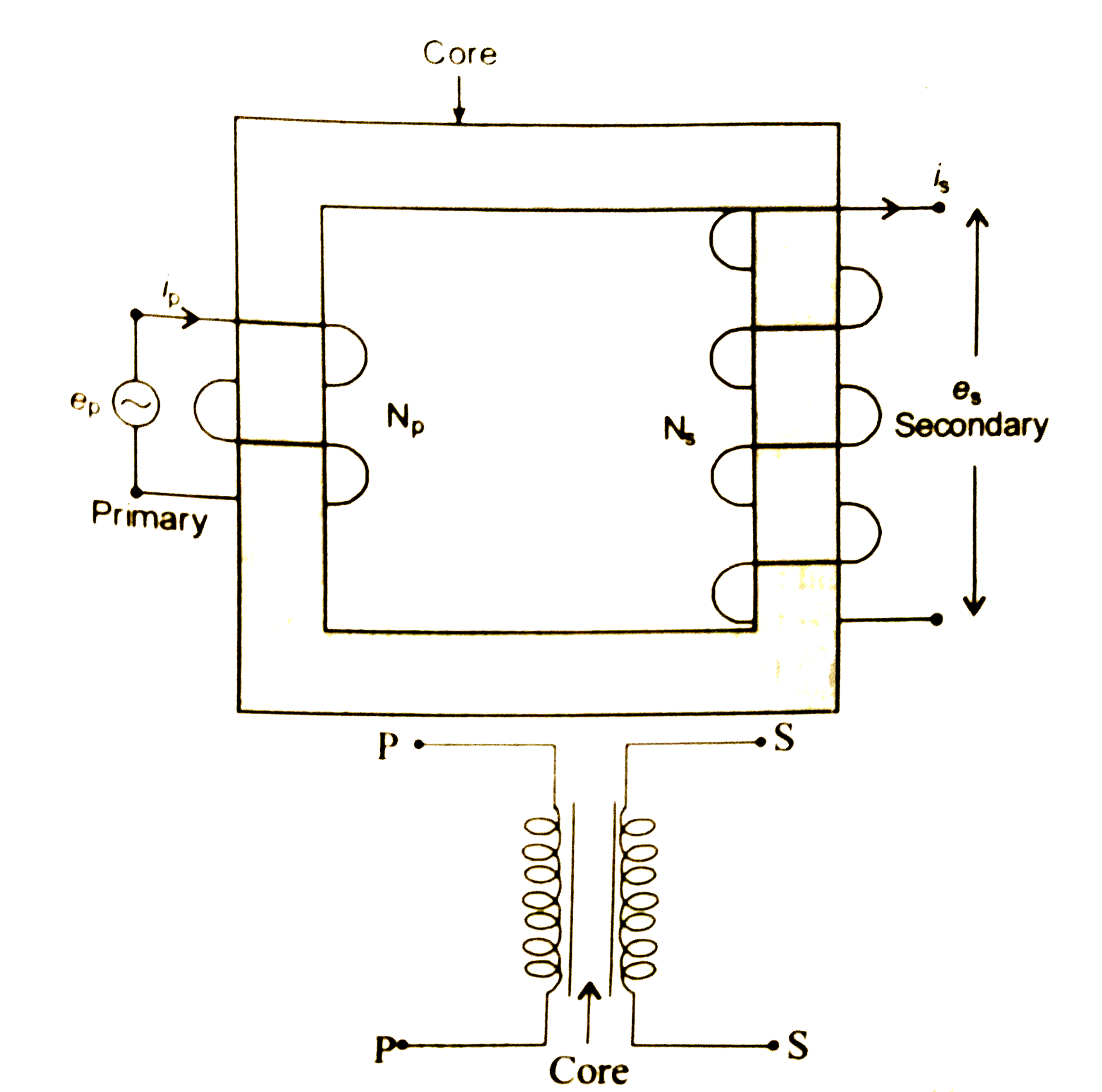State the principle of working of transformer. Explain the construction and working of a transformer. Derive an expression for e.m.f. and current in terms of ratio. Find the magnetization of a bar magnet of length 10 cm and cross-sectional area 4cm2, if the magnetic moment is 2Am2.
Transformer is an electrical device which conversts low a.c. voltage at high current into high a.c. voltage at low current and vice varas. It works on the principle of mutual induction i.e., ''whenever the magnetic flux linked with a coil changes, an e.m.f. is induced in the neighbouring coil''

Construction of transformer : It consists of two coils, primary (P) and secondary (S) which are insulated from each other and wound on a soft iron core. The primary and secondary coils are called as input and output coil respectively.
Working of transformer : When an alternating voltage is applied to the input coil (primary coil), the current through the coil goes on changing. This also changes the magnetic flux through the core. As this changing magnetic flux is linked with both the coils, an emf, is induced in each coil. The amount of the magnetic flux linked with the coil depend upon the number of turns of the coil.
Expreisson for e.m.f. and current : Let ϕ be the maganetic flux linked per turn with both the coils at certain instant 't'. Also suppose 'N'pand'N's as the number of turns of primary and secondary coil respectively.
Now, N2ϕ= Magnetic flux linked with the primary coil at certain instant 't'. And
Nxϕ= Magnetic flux linked with the secondary coil at certain instant 't'
Then, induced e.m.f. produced in both the coils is given by
ep=−dϕpdt=−Npdϕdt ......(i)
es=−dϕsdt=−Nsdϕdt ......(ii)
Dividing equation (ii) by equation (i) we get
esep=NsNp
which represents the equation of transformer ration.
For an ideal transformer,
Input power= Output power
i.e., epip=esis
∴esep=ipis ......(iii)
But esep=NsNp
∴NsNp=ipis ......(iv)
From equations (iii) and (iv)
esep=NsNp=ipis
Numerical :
Given l=10cm=10×10−2 m, area of cross-section, A=4cm2=4×10−4m2,Mnet=2Am2
V=l×A
=10×10−2×4×10−4
=4×10−5m3
As we know,
Magnetization (Mz)=MnetV=24×10−5
=50000Am−1
Therefore, the magnetisation of a bar magnet is 50000A/m.
Similar Questions
Knowledge Check
The magnetization of a bar magnet of length 5 cm,cross-sectional area 2cm2 and magnetic moment 1 Am2 is
A1×105AmB2×105AmC3×105AmD4×105AmWhat is the intensity of magnetisation of a bar magnet of length 4 cm cross sectional area 2.5 cm2 and magnetic moment 2 Am2 ?
A105 A/mB2×105 A/mC3×105 A/mD0.5×105 A/mWhat is the magnetization of a bar magnet having length 6 cm and area of cross section 5 cm2 ? (M = 1 Am2)
A1.2×10−4A/mB3.3×104A/mC1.25×10−4A/mD3.3×10−4A/m
State the principle on which transformer works. Explain its working with construction. Derive an expression for ratio of e.m.f.s and currents in terms of number of turns in primary and secondary coil.
A conductor of any shape, having area 40cm2 placed in air is uniformaly charged with a charge 0.2μC. Determine the electric intensity at a point just outside its surface. Also, find mechanical force per unit area of the charged conductor.
[ε0=8.85×10−12 S.I. units]
View SolutionThe areas of cross-section of three magnets of same length are A,2AA and 6A respectively The ratio of their magnetic moments will be
View SolutionThe magnetic moment of a length 10 cm and pole strength 4.0 Am will be
View SolutionA bar magnet has length 3 cm, cross-sectional area 2cm3 and magnetic moment 3Am2. The intensity of magnetisation of bar magnet is
View SolutionWhat is the geomwtric length of a bar magnet having pole strength 60 Am and magnetic moment 6Am2?
View Solution
